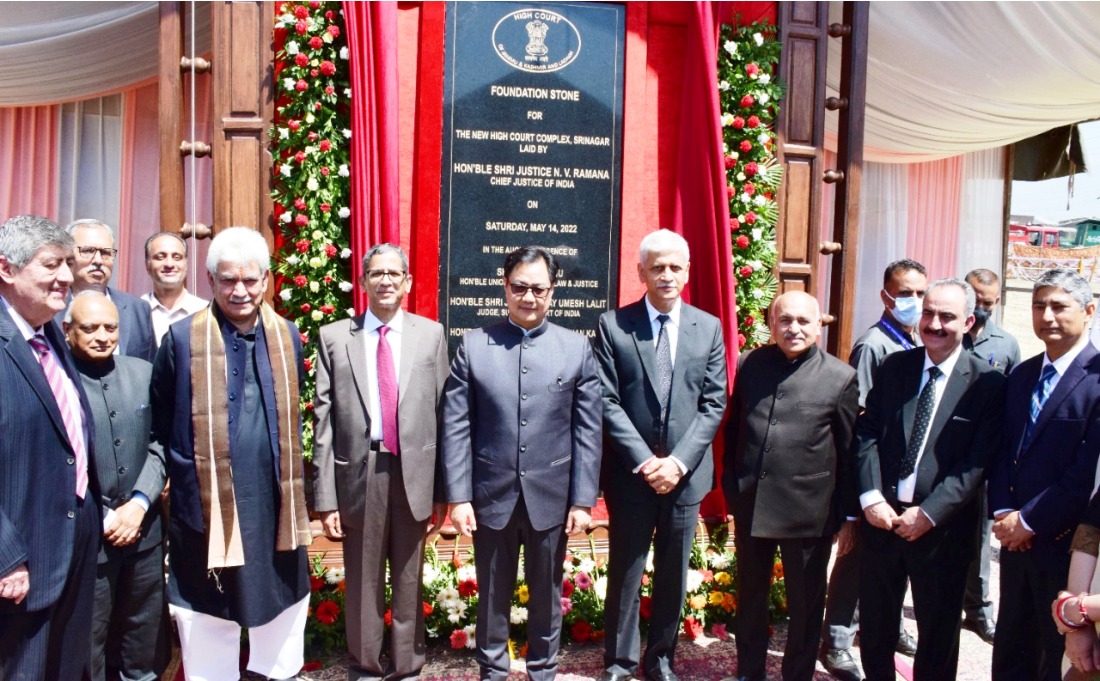by Ummar Jamal
The establishment of an All-India Judicial Service represents a transformative step with the potential to address various challenges confronting the Indian judiciary.

During the Constitution Day celebrations in 2023, President Droupadi Murmu underscored the imperative of establishing an All-India Judicial Service (AIJS), highlighting the necessity to identify and foster talented individuals within the legal domain. The proposal to centralize the recruitment of judges for the district judiciary, resembling the Union Public Service Commission (UPSC) model, has been a longstanding subject of discussion in India. Under this suggested framework, a centralized recruitment examination would be administered, and successful candidates would be allocated to specific states. Despite being part of the Union government’s official policy, attaining consensus has proven challenging, with reservations voiced by both High Courts and State governments.
The concept of AIJS was initially put forth by the Law Commission of India in 1958. Advocacy for AIJS gained traction during Chief Justice Conferences in 1961, 1963, and 1965. However, it encountered opposition from certain States and High Courts concerned about relinquishing control over lower-level judicial appointments. Currently, state governments manage recruitment for lower judicial positions, with procedural variations across states.
The proposition for an All-India Judicial Service holds the potential to usher in a transformative era for the Indian judiciary, offering a myriad of benefits that extend well beyond the courtroom. Its introduction promises the standardization of training for prospective judges. Through a centralized selection process, a uniform set of criteria will be established, ensuring candidates undergo a rigorous and standardized training program. This not only elevates the quality of judicial officers but also fosters a sense of consistency in the application of law across the nation.
According to the 2022 India Justice Report (IJR), a noteworthy statistic emerges – only 35 per cent of subordinate court judges are women. The introduction of an All-India Judicial Service offers a strategic avenue to address this gender imbalance. By implementing a centralized recruitment process, the judicial system can actively fantastic diversity and inclusivity, ensuring representation from various demographics. This aligns with the constitutional principles of equality and contributes to shaping a judiciary that mirrors the diverse fabric of the nation it serves.
The pressing matter of vacant judicial positions within the district judiciary, as highlighted in recent Law Ministry data, requires immediate attention. According to the Law Ministry’s recent findings, there are 5,388 unfilled posts of judicial officers as of 2023. These vacancies compromise the efficiency and accessibility of justice. The establishment of an All-India Judicial Service offers a systematic solution to this challenge. By streamlining the recruitment process, the service can expedite the filling of vacant positions, ensuring a robust and functional judiciary across all districts. This centralized approach minimizes bureaucratic delays, fostering a more responsive and dynamic judicial system.
The All-India Judicial Service (AIJS) will effectively address the shortage of judges in India, facilitating expedited vacancy filling and bolstering recruitment in the lower judiciary. This step aligns to achieve a more optimal judge-to-population ratio, aiming for the recommended standard of 50 judges per 10 lakh people, in contrast to the current ratio of about 19 judges per 10 lakh.

A centralised judicial service can play a pivotal role in promoting judicial independence. By establishing a transparent and impartial recruitment process insulated from political influence, the judiciary can fortify its independence. This, in turn, enhances public trust, as citizens perceive the selection of judges as transparent and merit-based. Upholding judicial independence is fundamental to a thriving democracy, and the All-India Judicial Service can serve as a cornerstone in achieving this objective.
A centralised service holds the potential to enhance efficiency in the adjudication process. Uniformity in the selection and training of judicial officers can cultivate a more cohesive and streamlined judiciary. Judges chosen through a standardized process are likely to share a similar skill set, promoting smoother collaboration and understanding among legal professionals. This coherence may result in expedited case resolution, addressing the persistent backlog within the Indian judicial system.
The establishment of the All-India Judicial Service will create opportunities for talented individuals from diverse backgrounds to contribute to the judiciary. By identifying promising candidates and offering a structured path for career progression, the service ensures that merit takes precedence over extraneous factors. This inclusivity not only enriches the judiciary with varied perspectives but also reinforces the idea that a career in the legal domain is accessible to individuals from all levels of society.

The introduction of AIJS aims to establish parity between the judicial and civil services, discouraging law graduates from favouring Civil Services over the judiciary. This strategic move is poised to attract a promising cohort of talented law students who might otherwise opt for private employment, thereby significantly raising the calibre of candidates within the judiciary.
The establishment of an All-India Judicial Service represents a transformative step with the potential to address various challenges confronting the Indian judiciary. From promoting gender diversity and addressing judicial vacancies to standardizing legal education and reinforcing judicial independence, the benefits are indeed manifold.
(The author serves is currently in his final year of Law Studies at Kashmir University. Ideas are personal.)














